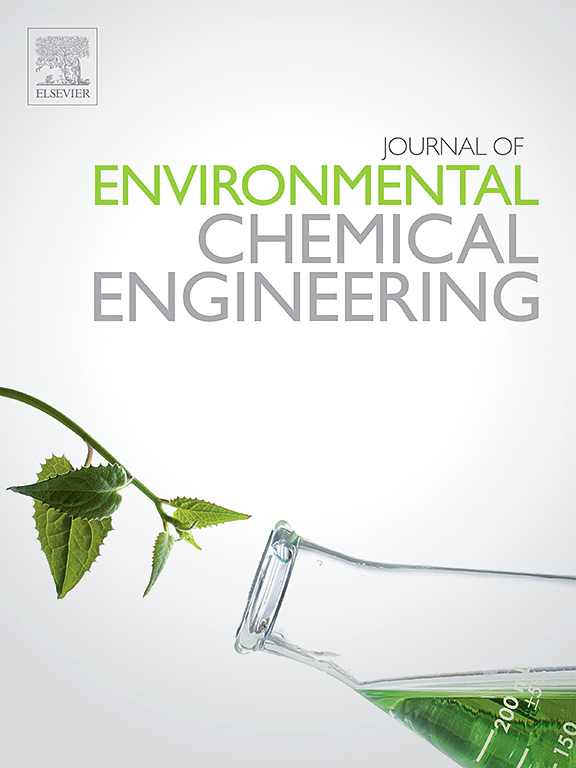Reducing nitrogen losses in chicken manure composting with acetic acid: Importance of rare bacteria in nitrogen transformation during the thermophilic phase
IF 7.4
2区 工程技术
Q1 ENGINEERING, CHEMICAL
引用次数: 0
Abstract
This study investigated the effect of acetic acid on reducing nitrogen losses in pilot-scale chicken manure composting and provided a comprehensive analysis of the distinct roles of abundant and rare bacteria in nitrogen transformation. Acetic acid was added at concentrations of 4.05 (AAL) and 8.09 g/kg (AAH), and physicochemical parameters, ammonia emissions, and bacterial communities were monitored. AAL and AAH reduced thermophilic-phase ammonia emissions by 27.67 % and 12.81 %, respectively, contributing to 53.48 % and 43.34 % of overall nitrogen loss reductions, respectively. Acetic acid enriched rare taxa rather than abundant taxa in the thermophilic phase, which contributed to reduced ammonia emission in AAH by promoting nitrification and ammonia assimilation. Network analysis indicated that nitrogen conversion was related to rare taxa interactions (p < 0.001) rather than abundant taxa interactions, while the relationship was enhanced in AAL but not in AAH. For community assembly, rare taxa were more affected by stochasticity than abundant taxa, while AAH enhanced the stochasticity of rare taxa (p < 0.05) but did not affect that of abundant taxa. Rare taxa assembly was related to nitrogen transformation (p < 0.05), while abundant taxa assembly was not. These results indicated that rare taxa responded differently to varying doses of acetic acid. This study demonstrated that a lower dose of acetic acid was more effective in reducing ammonia emissions during the thermophilic phase of composting and highlighted the importance of rare taxa in nitrogen transformation. This study will promote the application of organic acids for nitrogen retention in manure composting.
求助全文
约1分钟内获得全文
求助全文
来源期刊

Journal of Environmental Chemical Engineering
Environmental Science-Pollution
CiteScore
11.40
自引率
6.50%
发文量
2017
审稿时长
27 days
期刊介绍:
The Journal of Environmental Chemical Engineering (JECE) serves as a platform for the dissemination of original and innovative research focusing on the advancement of environmentally-friendly, sustainable technologies. JECE emphasizes the transition towards a carbon-neutral circular economy and a self-sufficient bio-based economy. Topics covered include soil, water, wastewater, and air decontamination; pollution monitoring, prevention, and control; advanced analytics, sensors, impact and risk assessment methodologies in environmental chemical engineering; resource recovery (water, nutrients, materials, energy); industrial ecology; valorization of waste streams; waste management (including e-waste); climate-water-energy-food nexus; novel materials for environmental, chemical, and energy applications; sustainability and environmental safety; water digitalization, water data science, and machine learning; process integration and intensification; recent developments in green chemistry for synthesis, catalysis, and energy; and original research on contaminants of emerging concern, persistent chemicals, and priority substances, including microplastics, nanoplastics, nanomaterials, micropollutants, antimicrobial resistance genes, and emerging pathogens (viruses, bacteria, parasites) of environmental significance.
 求助内容:
求助内容: 应助结果提醒方式:
应助结果提醒方式:


